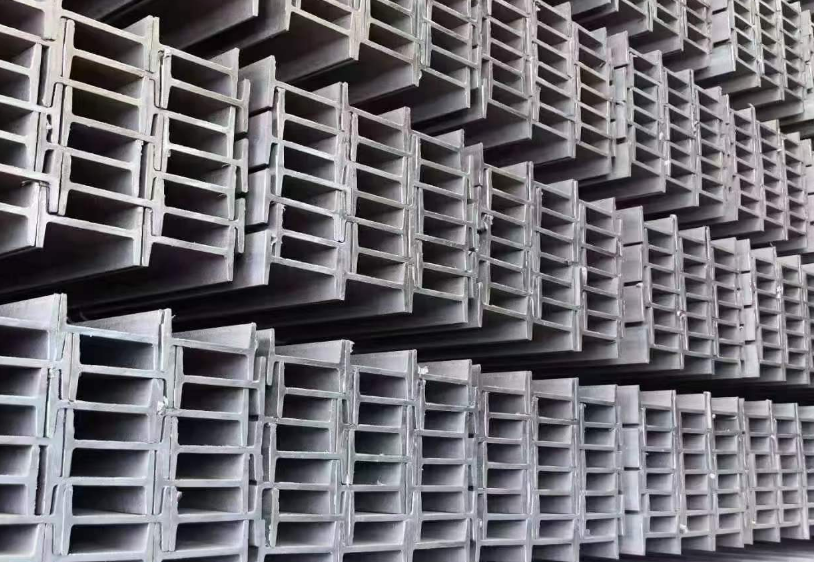Channel steel and C-shaped steel are two common carbon structural steels used in construction and machinery. They each have their own characteristics and advantages, as well as different application ranges and uses. So, channel steel vs c-shaped steel – what’s the difference? This article will introduce the differences between channel steel and C-shaped steel from the following aspects:

Channel Steel vs C-shaped Steel – What’s the Difference?
Channel Steel vs C-shaped Steel – Suppliers:
Channel steel is produced by hot rolling and supplied directly by steel plants, and its thickness is relatively large. C-shaped steel is produced by cold rolling of steel strips and is generally supplied by steel structure plants, and its thickness is relatively thin. Therefore, when selecting channel steel and C-shaped steel, factors such as supplier quality, reputation, price, and service need to be considered.
Channel Steel vs C-shaped Steel – Model Classification:
Channel steel is divided into ordinary channel steel and light channel steel. The specifications of hot-rolled ordinary channel steel are 5-40#. The specifications of hot-rolled modified channel steel supplied by agreement between the supplier and the demander are 6.5-30#. Channel steel is mainly used in building structures, vehicle manufacturing, other industrial structures, and fixed cabinets. Channel steel is often used in conjunction with I-beams. Channel steel can be divided into four types according to shape: cold-formed equal-leg channel steel, cold-formed unequal-leg channel steel, cold-formed inner rolled edge channel steel, and cold-formed outer rolled edge channel steel.
C-shaped steel can be divided into various types, such as galvanized c-shaped steel, hot-dip galvanized cable tray c-shaped steel, glass card slot c-shaped steel, glass curtain wall c-shaped steel, wiring channel c-shaped steel, reinforced c-shaped steel, double-clamping c-shaped steel, unilateral c-shaped steel, manual forklift c-shaped steel, unequal c-shaped steel, straight edge c-shaped steel, bevel edge c-shaped steel, inner rolled edge c-shaped steel, inner bevel edge c-shaped steel, roof (wall) purlin c-shaped steel, automobile profile c-shaped steel, highway column c-shaped steel, solar bracket c-shaped steel (21-80 series), formwork support c-shaped steel, equipment precision c-shaped steel, etc.
Channel Steel vs C-shaped Steel – Price Range:
The price of channel steel and C-shaped steel is affected by various factors such as market supply and demand, raw material costs, and transportation costs, so there is no fixed standard. Generally speaking, under the same specifications and quality, the price of channel steel is higher than that of C-shaped steel, because the production cost of channel steel is higher than that of C-shaped steel.
Channel Steel vs C-shaped Steel – Application Range:
The application range of channel steel and C-shaped steel is different, mainly depending on their section properties and strength. The section of channel steel is in the shape of a groove, with high bending and shear resistance, suitable for withstanding large bending moments and shear forces. Therefore, it is mainly used in building structures, vehicle manufacturing, other industrial structures, and other fields. The section of C-shaped steel is in the shape of a C, with high bending resistance and lightweight advantages, suitable for withstanding small bending moments and axial forces. Therefore, it is mainly used in steel structure buildings for purlins, wall beams, roof trusses, brackets, and other fields.
Channel Steel vs C-shaped Steel – Uses:
The uses of channel steel and C-shaped steel are also different, mainly depending on their functions and characteristics. Channel steel can be used as the main load-bearing component of the building structure, as an important component in vehicle manufacturing, and as a support structure for fixing panels and other equipment. C-shaped steel can be used as a secondary load-bearing component of steel structure buildings. It can also be used as an installation structure for cable trays, glass curtain walls, solar brackets, and other equipment. It can also be used as formwork support, precision C-shaped steel for equipment, and other special-purpose materials.
Channel Steel vs C-shaped Steel – Application Scenario:
The scenarios for channel steel and C-shaped steel are also different, mainly depending on their application fields and environments. Common scenarios for channel steel include industrial plants, warehouses, bridges, workshops, garages, ships, machinery equipment, etc. Common scenarios for C-shaped steel include light steel structure plants, villas, container houses, prefabricated houses, exhibition halls, supermarkets, stadiums, power stations, solar power stations, etc.
Conclusion:
Through the introduction of the above aspects, we can see that there are many differences between channel steel and C-shaped steel, and they each have their own advantages and application ranges, which cannot be simply lumped together.
Thank you for reading our article and we hope it can help you to have a better understanding of the differences between channel steel vs c-shaped steel. If you want to find more information about channel steel, we would advise you to visit Sino Stainless Steel.
As a leading supplier of stainless steel products across the world, Sino Stainless Steel provides customers with high-quality stainless steel coils, stainless steel plates, carbon steel, stainless steel bars, and stainless steel tubes at an extremely competitive price.
 :+86-13012867759
:+86-13012867759  :export86@sino-stainless-steel.com
:export86@sino-stainless-steel.com